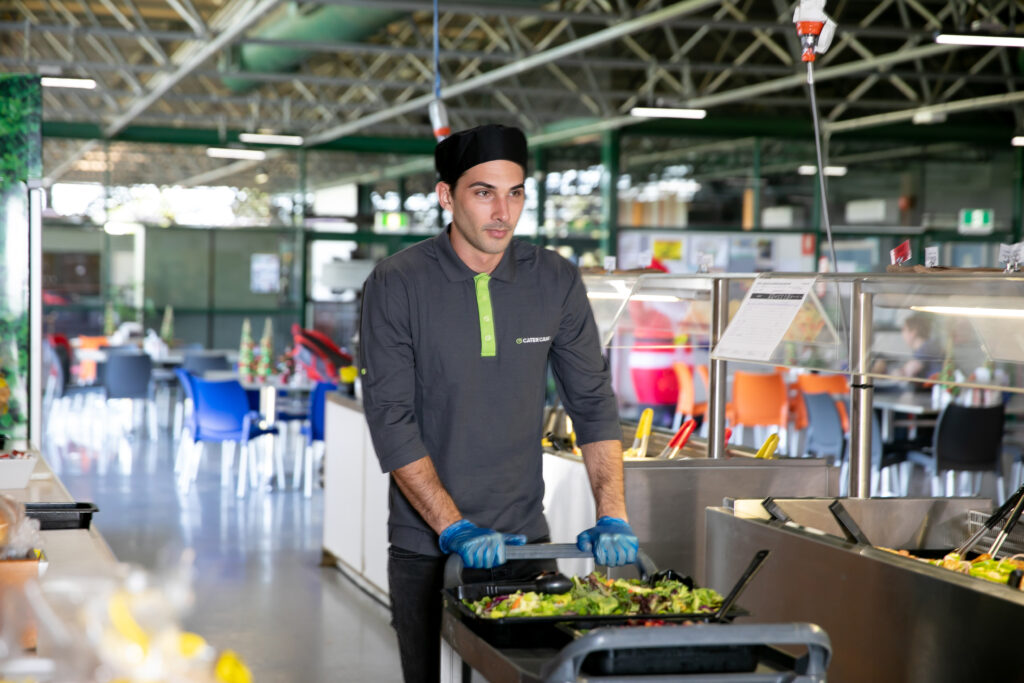The world is a busier place than ever, and more and more of us are starting to feel the fatigue. The Australian Institute of Health and Welfare conservatively estimates that almost half of the Australian population suffers from issues with their sleep, and between work, bills, and whatever else life has heaped on our plates, it’s common to find ourselves feeling tired and worn out.
Unfortunately, shift workers employed in FIFO arrangements are even less likely to get their required beauty sleep. Fatigue is a real issue facing shift workers who work long hours with minimal routine. Fortunately, modifications to diet and lifestyle delivered through well-designed remote catering can help manage the worst of the fatigue.

FIFO work and fatigue
Unfortunately, fatigue and FIFO work tends to go hand-in-hand. FIFO employees often have physically demanding jobs with intensive commutes, disruptive sleep environments, and are often participating in 24/7 operations – all of which contribute to higher levels of fatigue than the general population.
Between working long shifts and juggling general daily tasks like preparing for work, socialising, personal care, and whatever else an employee might need to get done, few workers tend to have enough time left in the day for an appropriate amount of sleep.
The situation doesn’t necessarily improve when employees are on their leave period, either. Many tend to struggle with the physical and social adjustments from the sudden shift back to “normal” schedules, and can struggle to get sufficient rest on their leave period while trying to fulfil all their neglected personal commitments before the end of their leave period.
More than just a bad night’s sleep
Fatigue can have a range of adverse mental and physical impacts on the body. While everyone’s experience with fatigue is different, some of the most common symptoms include:
These symptoms can be dangerous enough on their own, but when they’re being experienced by workers in a fast-paced and physically demanding work environment, the safety and wellbeing of others can be placed seriously at risk. Fatigue in the workplace contributes significantly to an increased risk of human error, which can cause a rise in the number of workplace injuries.

Getting your beauty sleep
Fortunately, there are a few simple steps that can be taken to manage and reduce the risks associated with fatigue. Our dietary intake plays an important role in our energy levels, and the nutrition from well designed remote catering services can help residents stay wide-eyed and bushy-tailed even on the longest of shifts. Beyond simply eating healthily, there are a few dos and don’ts that can help put fatigue to bed:
DO:
DON’T:

Facing the day thanks to remote catering
Between twelve hour shifts and ping ponging sleep schedules, FIFO workers will always have to contend with a higher level of fatigue than employees on standard sleep schedules. By managing the extra fatigue through monitoring their dietary intake, remaining hydrated, and getting as much sleep as they can (wherever that might be and whatever it might look like!) FIFO staff can avoid waking up on the wrong side of the bed in the morning.
If you’re concerned about fatigue and you want to be sure that your FIFO residents are enjoying dietetically assessed remote catering that will keep them in fighting form for every overnight shift, you’ll want to speak with our Remote sector experts. You can get in touch via the details below, or alternatively find both Hayley and Brad at the upcoming Diggers and Dealers conference from the 5th to the 7th of August 2024 in Kalgoorlie. Drop them a line to arrange a quick chat!